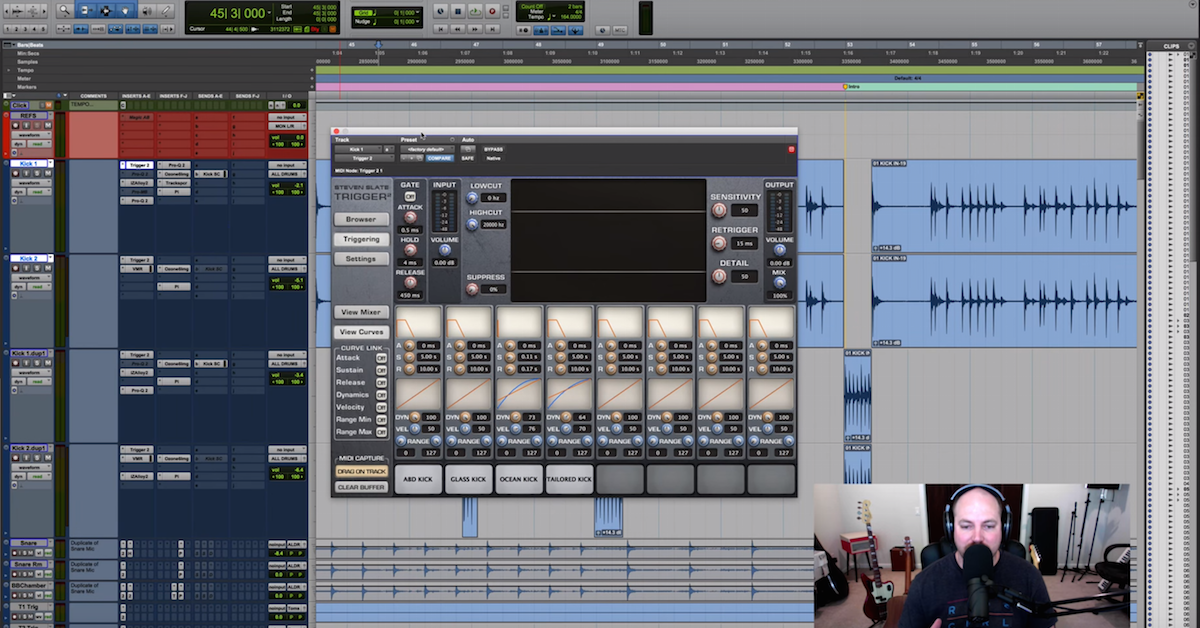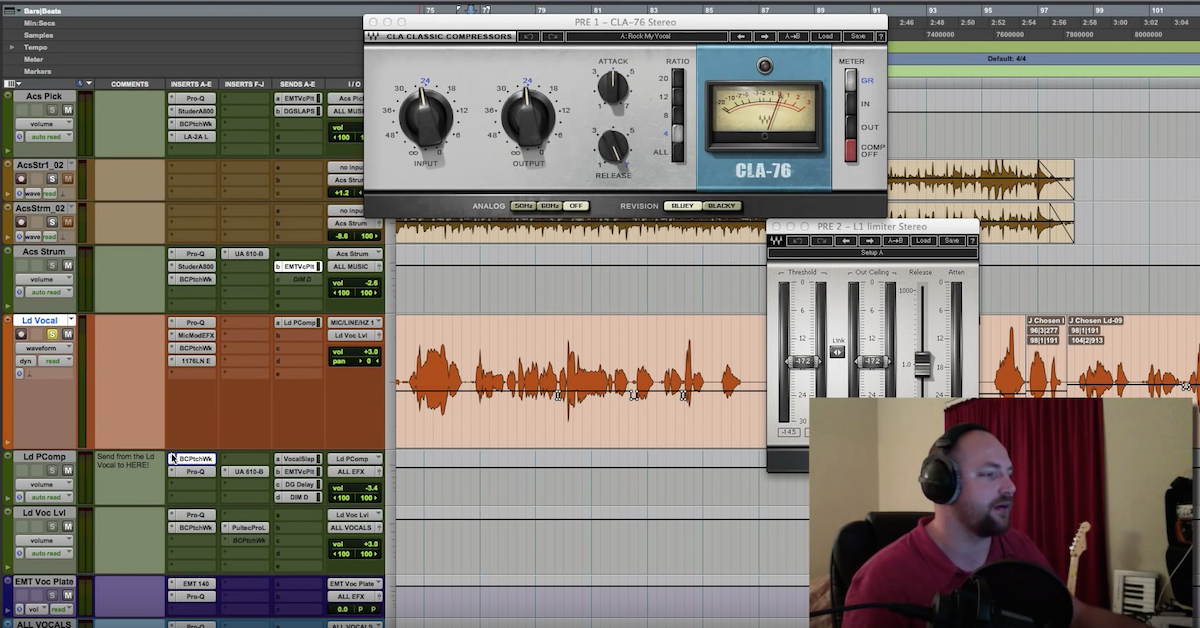12 Tips for Composing Music for TV Shows
Article Content
Do you ever find yourself watching TV and think that you could produce the music heard on the show? If you have decent production, editing, and mixing skills, then chances are you have what it takes. The following are 12 things to consider if you’re looking to compose for TV.
[Editor’s note: some words are used interchangeably: composing = producing = writing, songs = tracks = cues]
1. Sign up with a PRO
Performing Rights Organizations (PROs) issue licenses for TV networks, streaming services, radio stations and music venues to publicly perform (broadcast) copyrighted music. PROs collect and distribute performance royalties on behalf of their members. If you wish to receive royalties from the performance of your music on TV, you must be registered with a PRO.
In the United States, there are three main PROs: ASCAP, BMI and SESAC. For you international readers, click here to get a list of countries and their respective PROs. Both BMI and ASCAP have open enrollment and SESAC is invite-only. While there are some differences between them, the most important thing is to simply choose one. You will not receive performance royalties without being a member. After signing up, you can register the songs with your PRO.
In my experience, if you’re working with a music library (who is also the publisher), they’ll handle the registration, as they need to update the song registration to include their information to receive their share of the performance royalty. The music publisher will receive approximately 50% of the royalty for the performance
Bonus Tip: After your music has been sent off to the library and your songs are registered with a PRO, I suggest signing up with TuneSat. They offer a free tier that allows you to monitor up to 50 tracks. This is a great way to know when your music has been performed on TV.
2. Listen to the Music
Take time to watch shows for which your music would be suitable. Pay attention to the song structure, instrumentation and dynamics. A typical two to three-minute pop-style structure will work in most cases. Keep the intros short and add interest by adding and subtracting elements throughout the cue.
While it’s not uncommon to hear variety, most shows will stick to a certain genre or vibe. Focus on how the different sounds are used to evoke emotion. Check out the repertoire of popular and established libraries like Extreme Music and Killer Tracks to get an idea of where the bar has been set for TV music. If your production and mixing chops aren’t in the ballpark of what you hear in those libraries — you still have some work to do.
Bonus Tip: TuneFind is a great resource to find information on the music used for a particular show.
3. Know Your Strengths
Focus on producing the genres you enjoy. This may sound obvious, but spend time producing music you really love to make. The people choosing the music for the show (e.g. editor, music supervisor) will hear the difference between an energetic, heartfelt, well-produced track and a bunch of Apple Loops thrown together.
One of my favorite things about making cues is that I get to be a musical chameleon. I come from more of a guitar-based rock background, but probably 80% of my royalties come from Pop and EDM cues. At the end of the day, certain genres of music get used all the time on TV, so you should be adept at producing at least of one those genres to have a chance at getting placements.
Bonus Tip: While you want to create engaging, high-quality music, you also can’t afford to spend endless hours on a cue that will maybe only play for 15 seconds on a reality show. I’ve spent days on some cues, only to find out the cue I produced in 30 minutes from hitting record to bouncing the master received the most action.
4. Keep it Simple
The music should never get in the way of the dialogue or the story. Avoid harsh sounding leads, super busy drum patterns, or other musical elements that draw too much attention. Unless, of course, that’s exactly what the scene song calls for!
Leave some space in the arrangement. Remember, the music that gets placed in a show is there to support the story and create an emotional response from the viewer.
5. Sample Libraries
It shouldn’t come as a surprise that almost all the music you hear on TV shows comes from a virtual instrument. Save for the occasional guitar, bass, or shaker — almost every sound I use is a synth or sampled instrument.
As producers, we have a nearly endless amount of sounds from which to choose. While it’s a fairly hefty upfront investment, Native Instruments Komplete has paid for itself many times over. The wide range of sounds and upgradability have cemented Komplete as the foundation of my productions. Plus, third-party developers are always coming out with new instruments using the Kontakt format. Check out sites like Kontakt Hub and VSTBuzz for deep discounts on new instruments and sounds.
Bonus Tip: Get organized. A few years ago, I grew tired of scrolling through endless lists of samples and patches. It took a few days, but I organized my samples into folders (Kicks, Snares, Percussion Loops, etc) and favorited often used samples and patches which sped up my production workflow.
6. Mix and Master
Every cue you submit to your publisher should be mixed and mastered — in other words — broadcast ready. There are some great mixing and mastering tutorials available, so I won’t get too detailed in this article, but learn to mix and master your cues so they’re ready to go for the publisher. Don’t crush the mix buss and leave some headroom.
Bonus Tip: Ozone and Landr are your friends.
7. Be Consistent
Practice makes perfect. It’s a tired cliche, but relevant to music production. Every time I find myself deep inside a writing phase, things just seem to click. Chord progressions and melodies come more naturally. Mixing and Editing become effortless and my workflow is more efficient.
When making cues, try to make a batch of 10-12 cues in that particular genre/vibe. This will give the publisher and ultimately the editor/supervisor plenty to choose from. Don’t be upset if your favorite cue from the batch never gets used (see bonus tip #3).
8. Be Reliable
Have you seen the 2008 movie Yes Man with Jim Carrey? It had a profound influence, for better or worse, on my approach to writing cues for TV and life in general. When I have an opportunity to produce music for a TV show or commercial, I try to clear my schedule and deliver the music on time.
Oftentimes, if I get a request from a publisher, they need the music quickly. Sometimes I get a few days and sometimes only a few hours. TV production schedules are tight and music is one of the last pieces added to a show. Be prepared to reliably deliver high-quality music on time.
9. Be Flexible
There have been numerous occasions where I’m asked to remix a cue or deliver stems of a mix. Usually, this process only takes a short amount of time, but be cautious of your mix not quite sounding the same after you’re asked to deliver stems. Save your plugin presets to quickly recall a mix and achieve similar results.
By creating stems, you give the editor a great amount of flexibility when syncing music to picture. It could be argued that having a more “flexible” cue makes it more likely they’ll choose yours over another. If you checked out the Extreme Music or Killer Tracks libraries linked earlier in the article, you’ll notice that most of the cues have several variations, including 30-second versions, instrumental only, and more.
Bonus Tip: In addition to creating stems, include the BPM, Key, Genre, and other metadata to make the cue more easily organizable for the publisher.
10. Quick and Easy Delivery
I use Dropbox, but there are many other backup and file sharing services to choose from. HighTail, Box, WeTransfer and Google Drive are all decent options. The key is that you need a reliable and convenient way to share files.
Bonus Tip: Make sure that the service you use has a mobile app. There have been multiple occasions where I’ve been contacted by a publisher and was away from my studio. Being able to send files while you’re on-the-go could be the difference between getting the gig or not.
11. Be Realistic
The feeling of hearing your music played on TV is exhilarating. It kind of legitimizes all the work you’ve put in over the years to become a music producer, or maybe it will simply impress your friends and family. Either way, you have some money coming your way thanks to US Copyright Law.
As the composer/producer of the cue, you will be paid one of two ways: on the front-end or the back-end. In the case of composing for Film, Games or TV Commercials, getting paid a sum of money to compose the music is considered front-end. In the world of TV, especially reality TV, front-end payment is rare and back-end payment from your PRO is the norm.
One lovely thing about back-end is that you receive small royalties every time your cue is played on the show. All those 15-20 second performances add up over time and lead to a nice royalty payment.
As you can imagine, the process of getting paid for the performance of your cue takes time. Six months to a year is about the average amount of time it takes the TV network to submit cue sheets to the PRO and for you to get paid.
Bonus Tip: Sign up for Direct Deposit payment from your PRO. If your royalty payment is less than $100, they will not send a paper check.
12. Reuse and Recycle
If you’re like me, you probably have a ton of unfinished tracks with names like “heavy dark beat” or “A minor thing”. Those unfinished tracks that don’t have a place on your next album or mixtape could easily become a cue.
There are numerous ways that you can reuse and recycle a previous MIDI performance or audio file. Import a MIDI file into a new track with a new sound, change the tempo, and slide some notes around to create a new variation. This is a quick way to get the creative juices flowing.
There you go — 12 tips that hopefully gave you some useful and practical information about composing for TV. Most of the music professionals I know have multiple sources of income outside of their primary gig. Composing for TV is a great way to supplement your recording, mixing and producing gigs.






